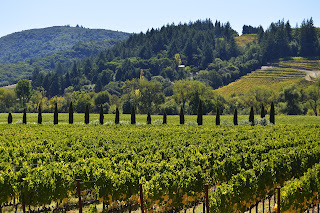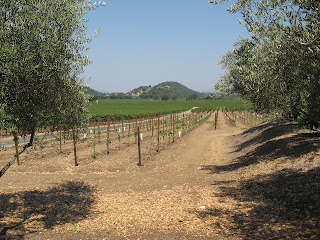A short History of winemaking in California
Introduction
Wine is one of the oldest and most beloved alcoholic beverages in the world, with a rich history dating back thousands of years. In the United States, the state of California is known for its thriving wine industry, producing some of the finest wines in the world. The history of winemaking in California is a fascinating story, full of triumphs and challenges. In this article, we will explore the history of winemaking in California, from its early beginnings to the modern-day industry.
The Early Years of California Winemaking
The history of California winemaking dates back to the Spanish mission period, which lasted from 1769 to 1823. During this time, the Spanish established a series of missions throughout California, and the Franciscan friars who ran the missions made wine for religious purposes. The wine was made from a grape variety called the Mission grape, which was brought to California by Spanish missionaries. The Mission grape was well-suited to the hot, dry climate of California, and it thrived in the state.
The Gold Rush era, which began in 1848, brought a wave of settlers to California, including many Europeans who were experienced in winemaking. These settlers recognized the potential for winemaking in California and began planting vineyards. By the 1860s, California was producing a significant amount of wine, and by the end of the decade, the state had become the largest wine-producing region in the United States.
However, the wine industry in California faced a significant setback in 1919 when Prohibition was enacted, making it illegal to produce, sell, or transport alcohol. The Prohibition era lasted until 1933, and during this time, many wineries were forced to shut down or switch to producing other products, such as grape juice or jam.
Get an online course on winemaking and become an expert of this art!
The Rise of the California Wine Industry
After the repeal of Prohibition in 1933, the California wine industry began to recover. A new generation of winemakers emerged, and many new wineries were established. One of the most significant developments during this time was the influence of the University of California, Davis on winemaking. The university established a program in winemaking in the 1930s and began conducting research on grape growing and winemaking techniques.
In the 1960s, a visionary winemaker named Robert Mondavi began promoting California wines to the world. Mondavi believed that California wines could compete with the best wines in the world, and he worked tirelessly to raise the profile of California wines. Mondavi's efforts paid off in 1976 when a blind tasting known as the Judgment of Paris took place. California wines were pitted against some of the best wines from France, and California wines came out on top in both the white and red wine categories.
California Wine Goes Global
The Judgment of Paris tasting was a turning point for the California wine industry, as it put California wines on the map and established the state as a world-class wine region. Napa Valley, in particular, became known for producing high-quality wines, and wineries in the region began to receive international recognition. The movie Sideways, which was released in 2004, further cemented California's reputation as a premier wine region, as it focused on the state's Pinot Noir wines.
Get an online course on winemaking and become an expert of this art!
The Hall of Fame
Agoston Haraszthy
Robert Mondavi
André Tchelistcheff
Gustave Niebaum
Brother Timothy
Dr. Harold Olmo
Paul Draper
Warren Winiarski
The present day of Californian Winemaking
The current Californian wine situation is one of growth and evolution. California is the fourth largest wine producer in the world, and its wines are celebrated for their quality and diversity. In recent years, the state's wine industry has continued to expand, with new vineyards being planted and new wineries opening their doors.
One of the biggest trends in Californian wine is the rise of natural and sustainable winemaking practices. Many winemakers are turning to organic and biodynamic farming methods, eschewing the use of pesticides and other chemicals in favor of more natural approaches. In addition, wineries are investing in renewable energy sources such as solar power to reduce their carbon footprint.
Another trend in Californian wine is the continued focus on innovation and experimentation. Winemakers are constantly exploring new grape varieties, fermentation techniques, and aging methods in order to create wines that are unique and exciting. This has led to the development of new wine styles and categories, such as orange wine and pet-nat, which have gained popularity in recent years.
The impact of climate change on Californian wine production is also a major concern. Rising temperatures and changing weather patterns have led to earlier harvests and the need for new irrigation and farming techniques. Winemakers are also experimenting with different grape varieties that can better withstand the warmer temperatures, as well as implementing new vineyard management practices to adapt to the changing climate.
The COVID-19 pandemic has also had a significant impact on the Californian wine industry. Many wineries were forced to close their tasting rooms and pivot to online sales in order to stay afloat. However, the pandemic also created new opportunities for wineries to connect with consumers through virtual tastings and online events.
Despite the challenges, the Californian wine industry remains strong and resilient. The state's wines continue to win top honors at international competitions, and demand for California wine remains high both domestically and internationally. The industry has also made strides in promoting diversity and inclusion, with initiatives to support women and minority winemakers and growers.
Get an online course on winemaking and become an expert of this art!
The daily chart
Economic facts:
- California is the largest wine-producing state in the United States, accounting for about 85% of the country's total wine production.
- The wine industry in California contributes over $57 billion to the state's economy each year, providing jobs for over 325,000 people.
- The top five wine-producing counties in California are San Joaquin, Sonoma, Fresno, Madera, and Monterey.
- In 2020, California produced over 3.4 million tons of wine grapes, valued at approximately $4 billion.
Oenological facts:
- California is home to over 4,000 wineries and 5,900 grape growers.
- The most widely planted grape varieties in California are Chardonnay, Cabernet Sauvignon, and Merlot.
- Napa Valley is considered one of the top wine regions in the world, known for producing high-quality Cabernet Sauvignon, Chardonnay, and Pinot Noir.
- The Central Coast region of California is known for its cool climate wines, such as Pinot Noir and Chardonnay, while the warmer regions of Southern California produce Zinfandel and Syrah.
- Many wineries in California use sustainable, organic, or biodynamic farming practices to produce their wines, with over 120,000 acres of vineyards certified as sustainable by the California Sustainable Winegrowing Alliance.
Conclusion
The history of winemaking in California is a story of perseverance, innovation, and passion. From its humble beginnings during the Spanish mission period to its modern-day status as a world-class wine region, the California wine industry has overcome many challenges and embraced new opportunities. Today, California winemakers are facing new challenges, such as climate change, but they are also embracing new practices and opportunities to continue producing some of the best wines in the world. The future of California winemaking looks bright, and we can't wait to see what new developments lie ahead for this vibrant industry.








Comments
Post a Comment